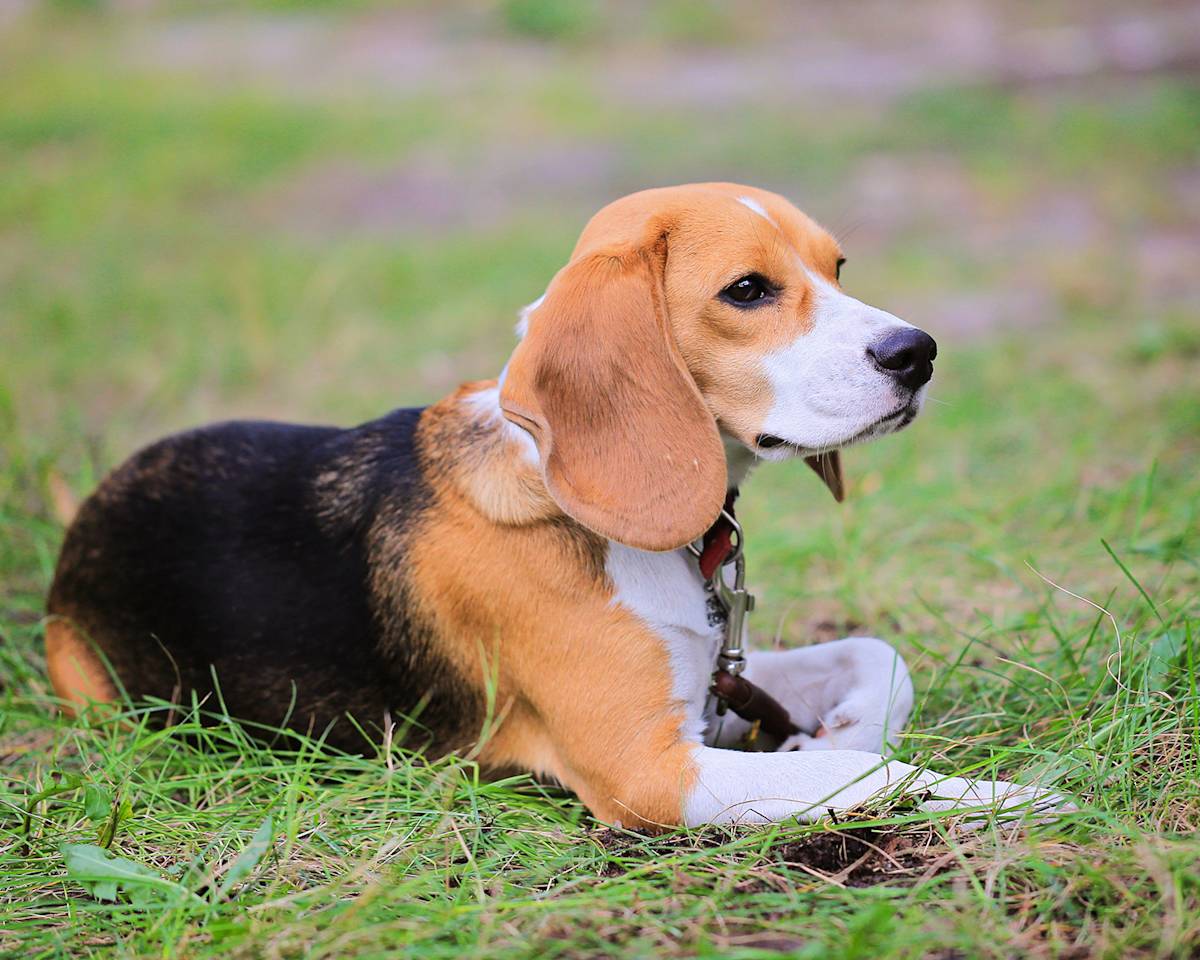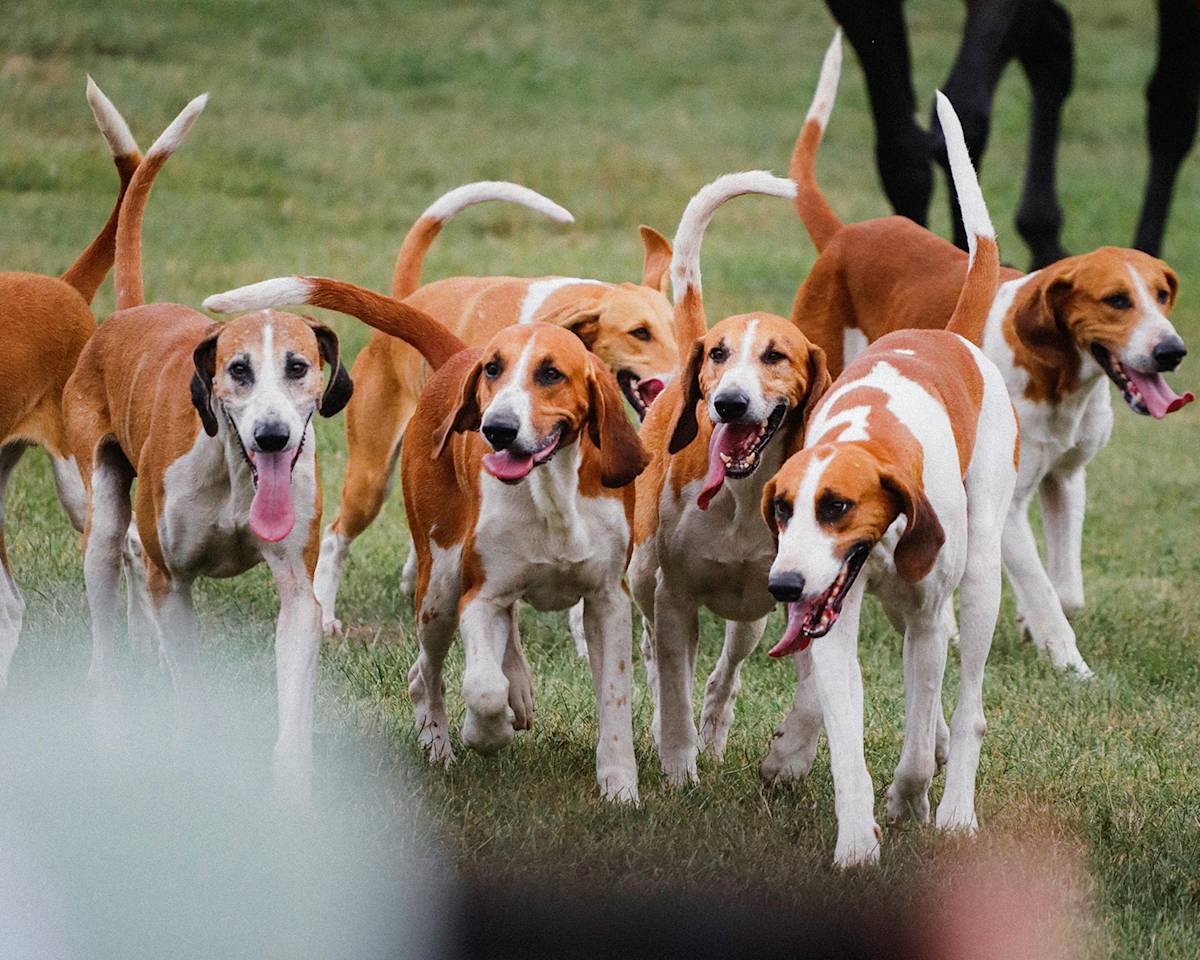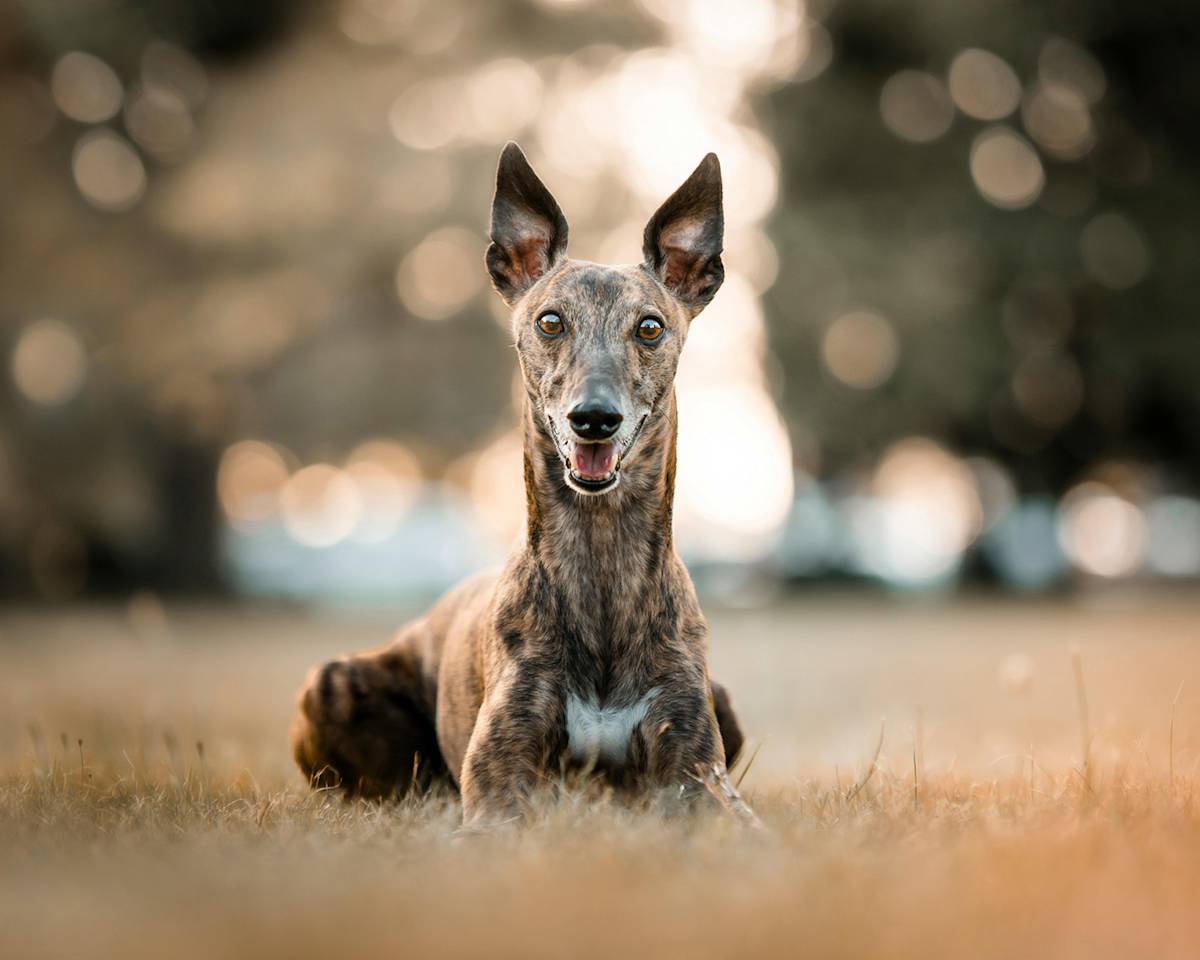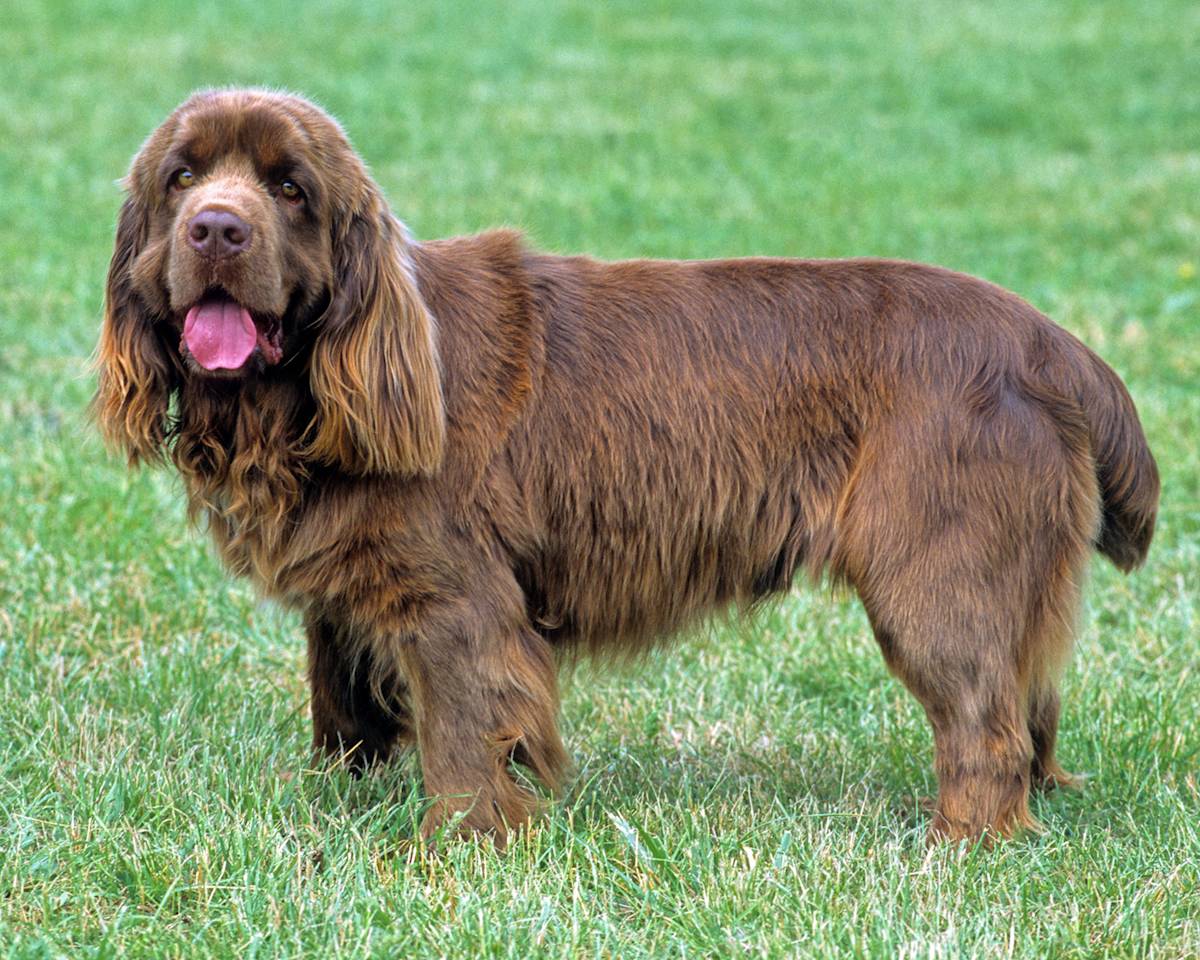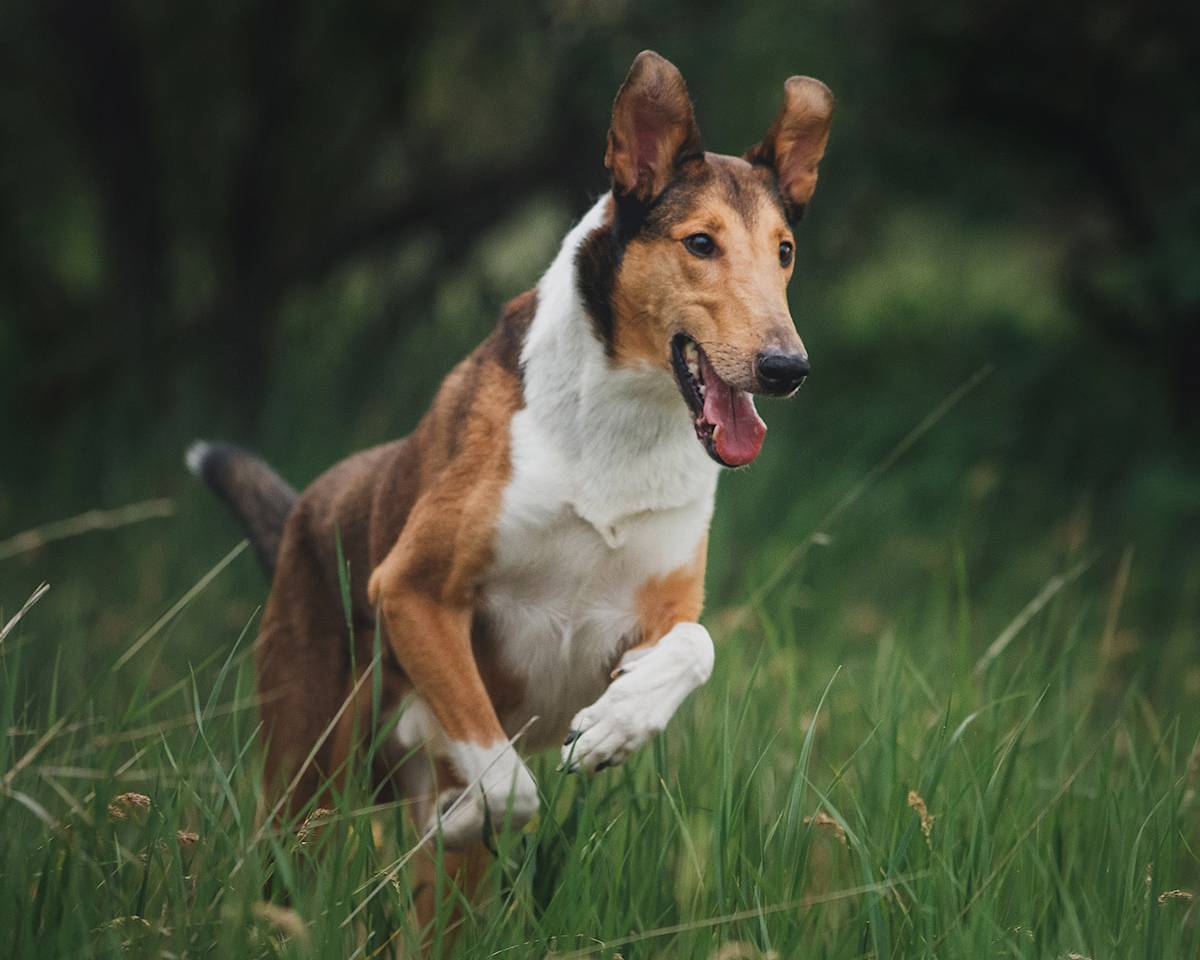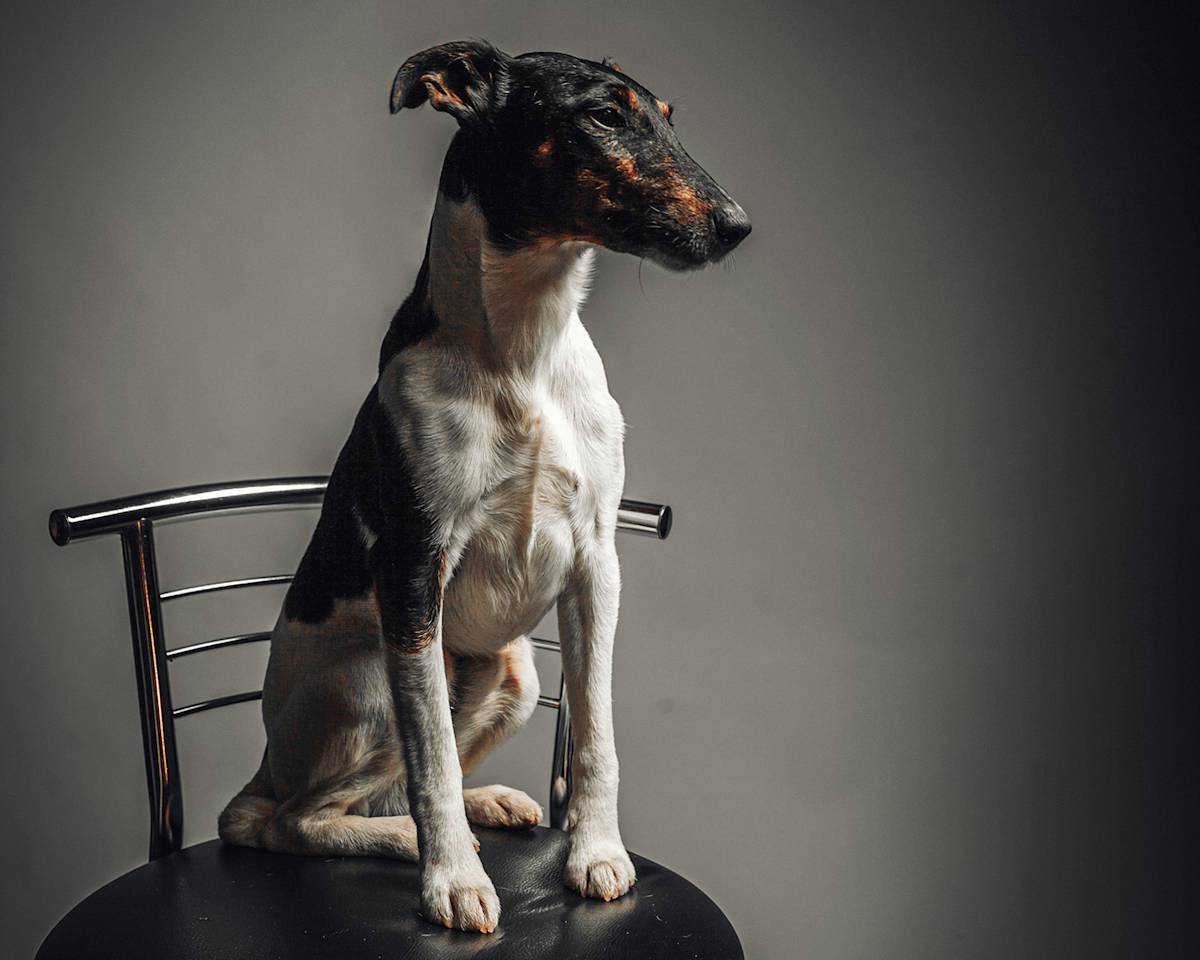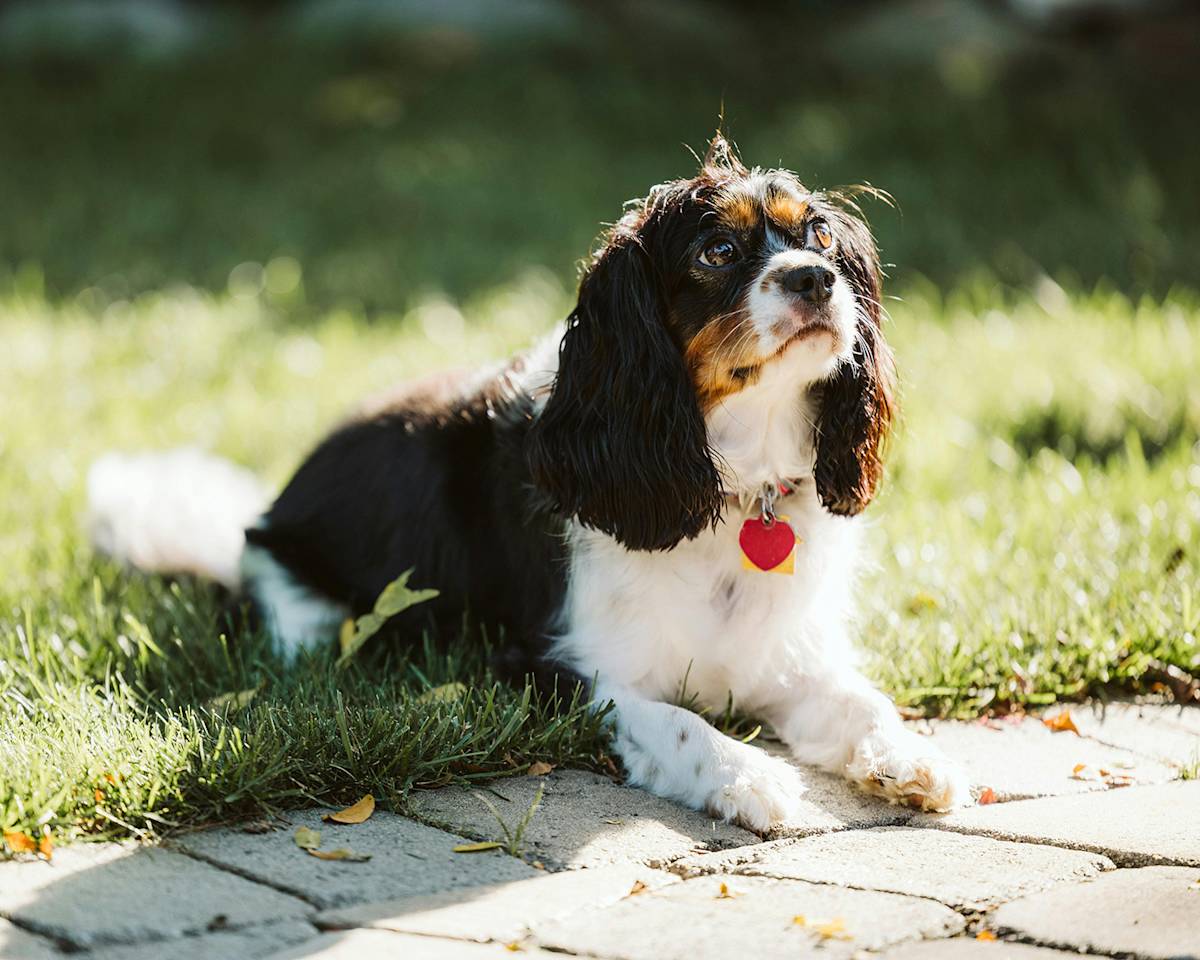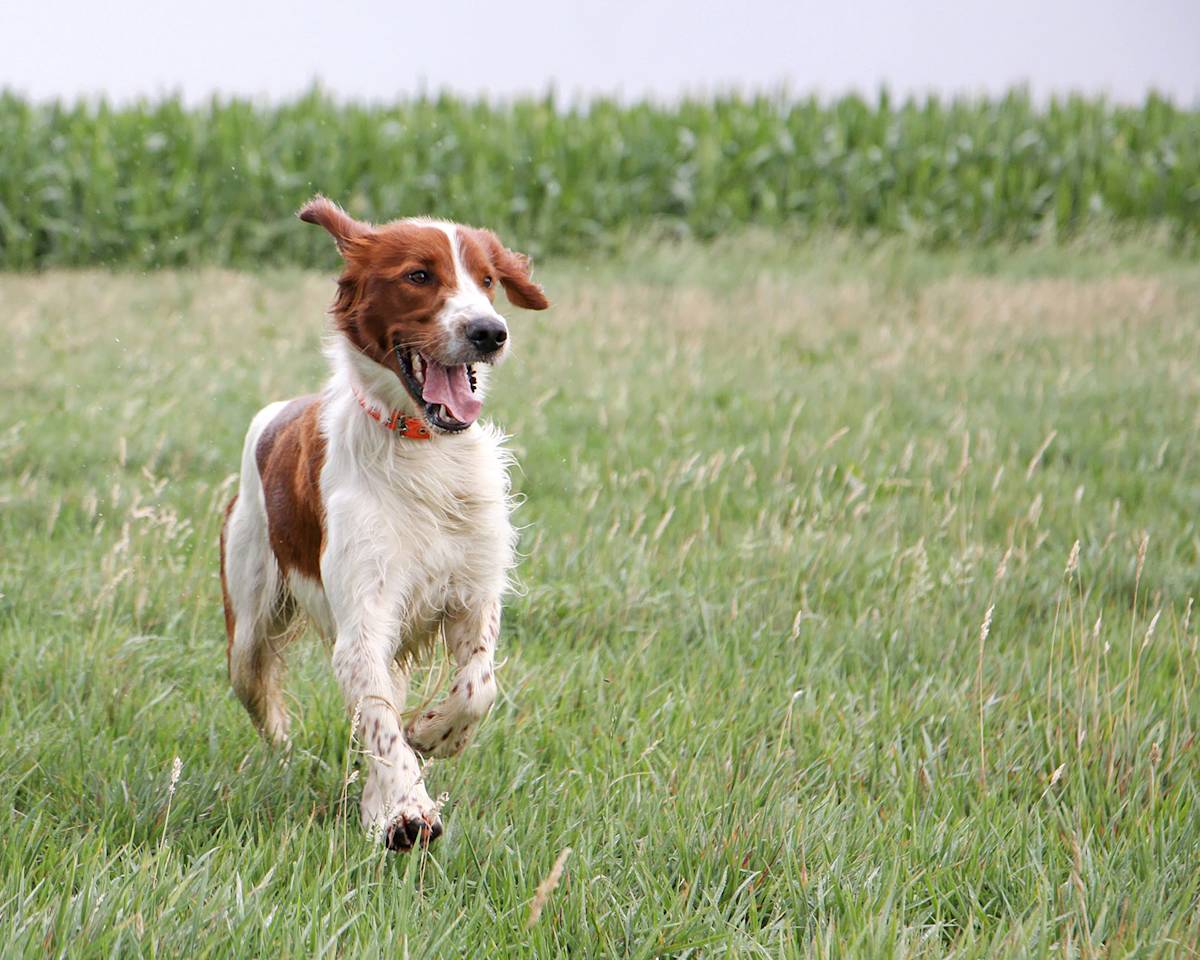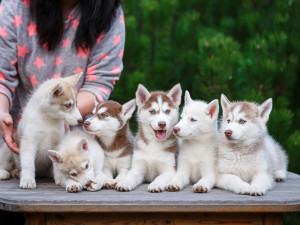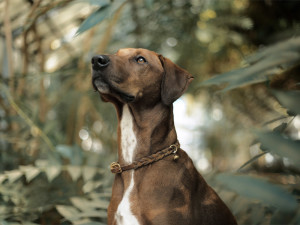Endangered Dogs: The Rare British Breeds on the Brink of Extinction
Many native British and Irish breeds are at risk of disappearing from our parks and streets...
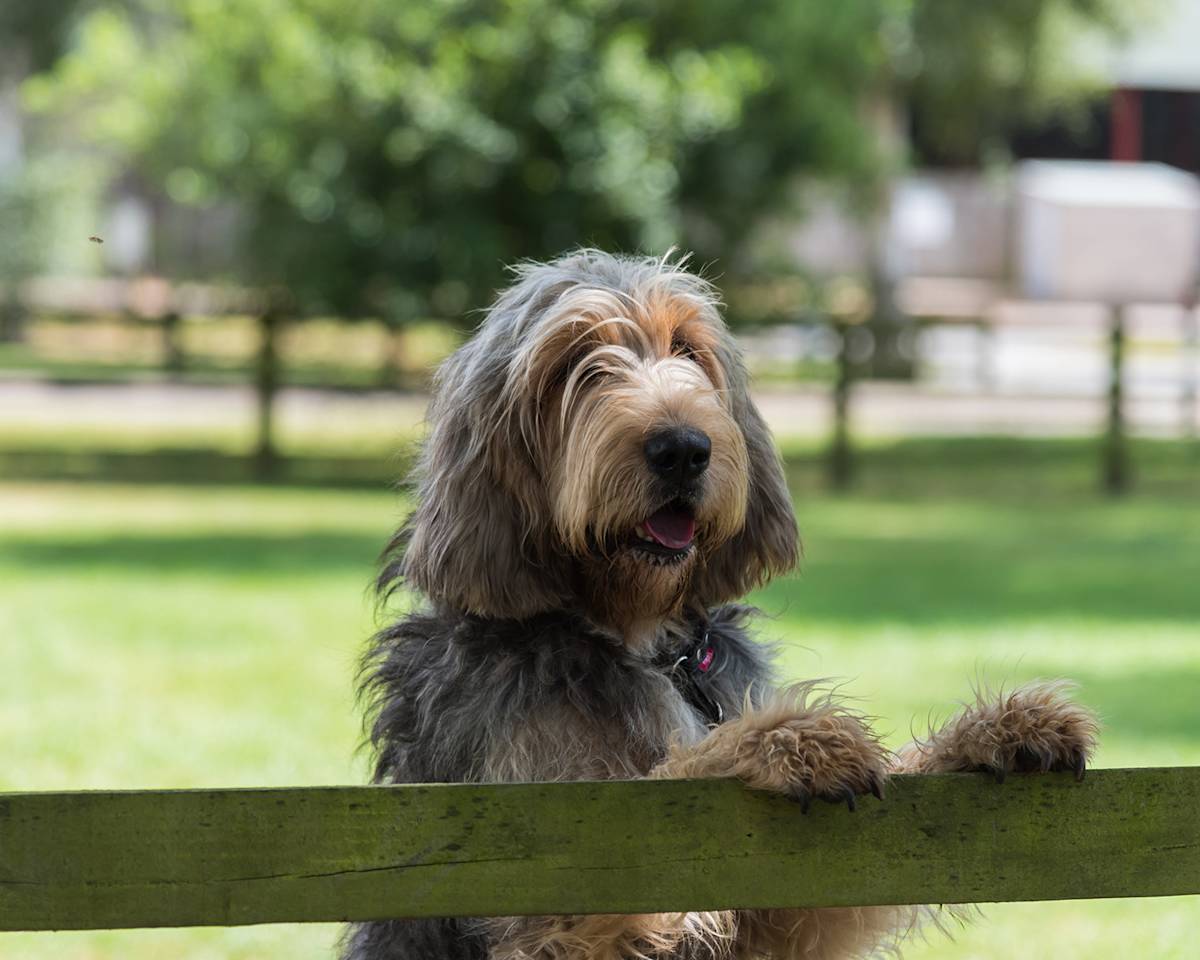
Share Article
Serious question: what’s the difference between a Curly Coated Retrieveropens in new tab and a Goldenopens in new tab one? They’re both part of the same family of dogs – they’re Retrievers originally bred as gundogs. But one’s in the top ten UK breeds (maybe you’re a pet parent to one or spot at least one each morning on the dog walk) but sadly the curly coated variety is at risk of going extinct. You’re very unlikely to pass one on your local high street.
In fact, the Curly Coated Retriever is the oldest of the Retriever breeds – and the tallest. Not-so-fun-fact, there were just 50 puppies registered last year with the UK’s Kennel Club making it a “vulnerable” dog breed.
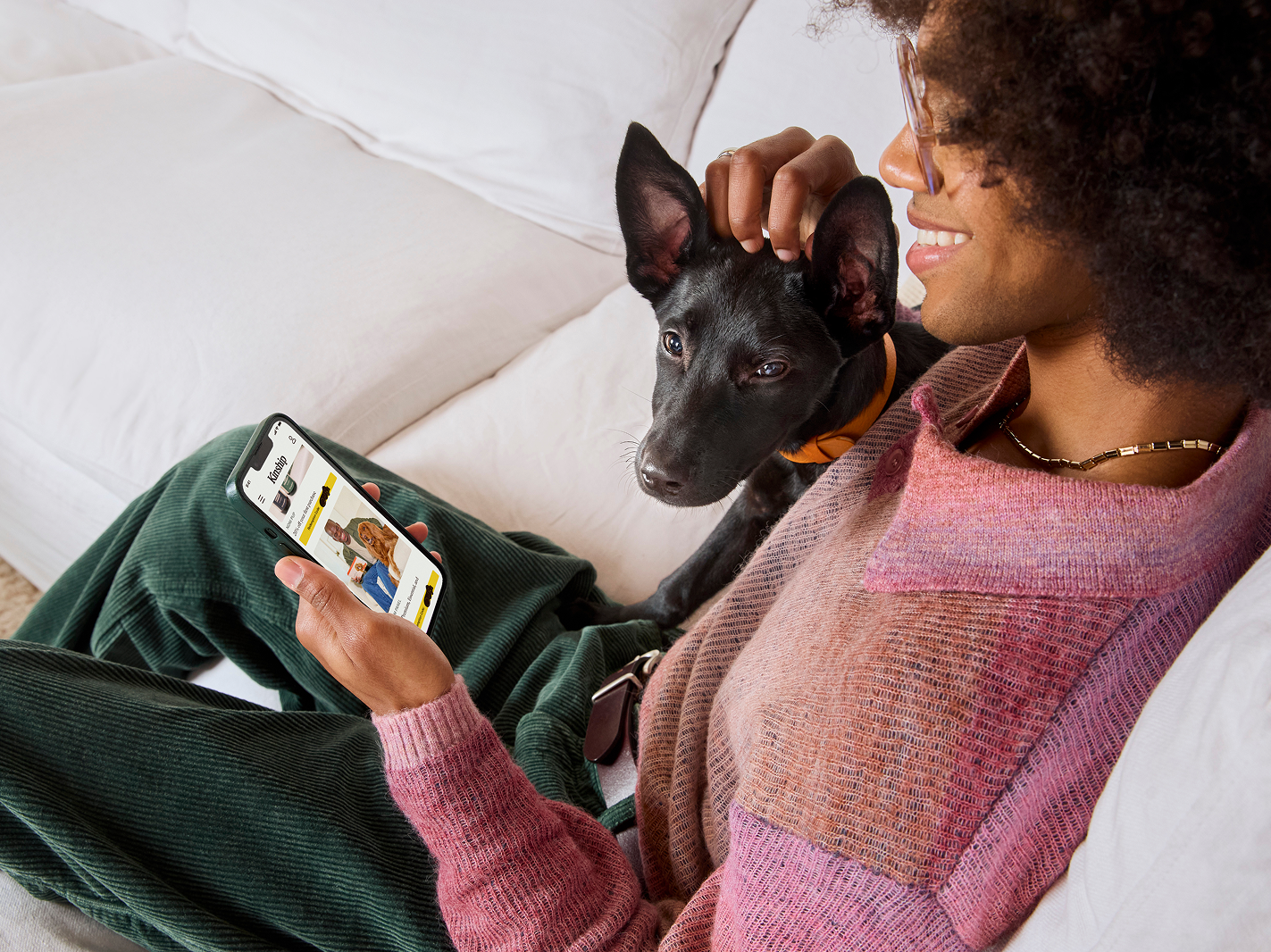
Get (totally free) deals for food, treats, accessories, tech and way more pet parenting must-haves.
But why does it matter? And which other breeds, like the dinosaur and dodo before them, are at risk of disappearing forever. We got in touch with the Kennel Club to find out – and meet the pet parents shining a light on these rare and wonderful dogs.
What makes a dog breed vulnerable?
The Kennel Club collects data around the UK’s native breeds and compiles a “vulnerable” and an “at-watch” listopens in new tab, to highlight dog breeds at risk of disappearing from our parks forever. If a breed registers fewer than 300 births in a year, then it’s considered vulnerable. There’s 39 currently on the list, including Otterhounds, Irish Setters and Bloodhounds. Between 300 and 450 birth deems that a breed needs to be watched and faces an uncertain future, of which there are seven in total, including Airdale Terriers and Scottish Terriers – that iconic little Scottie that adorns Radley handbags and is the piece everyone wants to play with on the Monopoly board.
Currently, the top ten breeds in the UK account for more than 60 percent of annual puppy registrationsopens in new tab – the beloved Labrador, French Bulldog and Cocker Spaniel among them. But, here’s the thing, some of the breeds now considered vulnerable used to claim the top spots. Back in its heyday, for example, the Smooth Fox Terrier registered 2,840 new puppies in 1926, but in 2024 there were just 45 – a decline of 98 percent! Then there’s the Old English Sheepdog, 5,731 pups registered in 1979, and just 241 last year. Bear in mind, these figures are based on dogs registered with the Kennel Club, rather than total UK numbers but they do offer up a snapshot of popularity.
Charlotte McNamara, Head of Health and Breeder Development at The Kennel Club, believes this matters – and it’s why the UK’s Kennel Club monitors and campaigns so they aren’t forgotten. “Certain native breeds are at risk of disappearing completely,” she says. “This means not only a loss of diversity, but also that potential owners have much more limited choices – meaning they’re less likely to choose a breed that would be the right fit for their lifestyle.”
But why does the breed of a dog matter so much? “Pedigrees have been bred over generations to produce a predictable set of characteristics,” explains Charlotte. “It’s this predictability that has made certain pedigree dogs so well suited to different jobs and roles in society.” Labradors as guide dogs, for example, and German Shepherds as police dogs. “It also means that would-be pet parents can make informed choices when it comes to picking a four-legged family member.”
Top ten vulnerable breeds in the UK according to The Kennel Club
According to The Kennel Club, the following breeds are the most vulnerable. But these figures only reflect the dogs registered with The Kennel Club, so they give a representative example but aren’t necessarily a wholly accurate figure of the entire UK.
Harrier
The most vulnerable breed according to TKC, with just one registered on its database, the Harrieropens in new tab is an affectionate and energetic scent hound, historically bred to hunt hare and sitting in size between the Beagle and Foxhound, with roots dating back to the 13th century.
Foxhound
With just six individuals listed, the Foxhoundopens in new tab is traditionally a pack hound with regionally distinct types.
Greyhound
There are 20 Greyhoundsopens in new tab on the list. A prestigious sighthound with ancient origins and royal ties, the breed was developed in Britain for hunting and later for racing, with show Greyhounds now larger than their track counterparts.
Spaniel (Sussex)
The Sussex Spanielopens in new tab, a low, powerfully built breed developed for dense cover in Sussex, is the rarest land Spaniel with just 24 on TKC’s database and a history of near-extinction but recent recovery in both type and numbers.
Bloodhound
The Bloodhoundopens in new tab, developed in Britain since before 1300, is a powerful scent-tracker once used for hunting and tracing humans, with roots linked to the St Hubert hounds of Belgium – and there are 25 on the list.
Collie (Smooth)
There are 29 Smooth Colliesopens in new tab, a breed historically overshadowed by its Rough-coated cousin, which has a shared ancestry and elegant refinement from Greyhound influence.
Otterhound
After the 1978 ban on otter hunting nearly wiped out the Otterhoundopens in new tab, dedicated enthusiasts preserved the breed with 42 now on the list. It’s known for its French-influenced noble appearance, oily double coat, webbed feet and exceptional scenting abilities.
Fox Terrier (Smooth)
The Smooth Fox Terrieropens in new tab, originally bred for fox hunting and valued for its white coat and digging ability, became one of England’s most popular breeds by the early 20th century, although there are now only 45 on the list.
King Charles Spaniel
Also coming in at 45 registered individuals, the King Charles Spanielopens in new tab – once grouped with the Cavalier – became a distinct breed in 1945 due to diverging preferences in appearance, and after a period of decline, has recently seen a revival thanks to efforts to improve health and temperament.
Irish Red and White Setter
The Irish Red and White Setteropens in new tab, originally favoured for its visibility in the field, declined in popularity due to the rise of the Red Setter but has seen a revival in recent years and now stands at 49.
Breed clubs and pet parents
Breed clubs exist for every single breed – including, of course, those that are vulnerable or at watch. These clubs serve as a vital source of information, support and resources for breeders and pet parents alike. Plus, they play a crucial role in monitoring breed health, promoting responsible breeding and advocating for the breed.
The Dandie Dinmont Terrier Clubopens in new tab (81 registered in 2024), for example, was founded in 1875. “Our dogs have an even longer history,” read the website. “Their pedigrees can be traced back to the 1830s, and the breed goes back to the early 1700s – yet the dogs have changed very little in the last 150 years.” (Side note, famous pet parents have included Agatha Christie, Queen Victoria and Sir Alec Guinness.)
Then there’s the Smooth Fox Terrier Associationopens in new tab set up in 1932 to protect the now-vulnerable breed. You might recognise the Smooth Fox Terrier as the dog of HMV logo fame – which is based on the 1898 painting His Master’s Voice by Francis Barraud of his dog Nipper by a gramophone.
Jane is a long-time pet parent – and breeder ��– to a couple of vulnerable breeds: currently two Smooth Fox Terriers, George and Audrey, and one Miniature Bull Terrier (165 in 2024) named Agatha. “Smooths are funny, loving, smart and quick-witted,” enthuses Jane. But they’re also “busy”, so “aren’t for everyone”. But if you have the time to keep them mentally and physically stimulated, Jane says they make “the most wonderful companions”.
Mini Bulls, on the other hand, are “considerably more challenging – read ‘stubborn’,” laughs Jane. “Most Terrier breeds can be frustrating and occasionally wilful, but that’s part of their charm.” That’s why Jane adores her three so much, describing them as a “weird Terrier pack”. She’s also passionate about showing them. “The training and grooming that go into show preparation builds a bond with your dog.”
And remember the shaggy dog Sandy in the 1982 film adaptation of Annie? Well, Sandy was played by an Otterhound. Maria Lerego is among just three Otterhound breeders in the UK. Although she points out that Sandy was actually an American Otterhound and a “not typical of the British type”.
Maria welcomed her first Otterhound puppy into her home back in 1984 (she’d wanted a big dog like a Great Dane, but discovered the Otterhound accident). She fell head over heels in love – she’s had so many over the years that she’s lost count. “They’re an unbelievably chilled-out breed,” she tells me over the phone, unlike her noisy Dachshunds barking in the background. “They’re easy going and laid-back, and don’t need constant attention.”
Cultural and historical contexts
So, why are people falling out of love with them? Sadly, like everything that’s been commodified, dog breeds fall in and out of fashion. “Breeds wax and wane in popularity,” says Charlotte. There’s a number of factors at play – “popular culture and high-profile ownership” among them. “The public might opt for the more popular choices that they’ve seen on TV or social media or even in their local neighbourhood,” Charlotte explains. “This means there’s a risk that many lesser-known breeds are more likely to be missed.”
And when a dog hits the news, its popularity soars. Searches for the Lagotto Romagnolo (an Italian breed), for instance, surged by a massive 700 percent on The Kennel Club’s website after King Charles welcomed Lagotto Romagnolo Snuff into the family. Films, royals and now social media influencers – it’s a pattern that constantly repeats itself. In 2024, TikTok reported that #GoldenRetriever had 60.3 billion views – inevitable then that The Kennel Club counts it among its most popular breeds. And back in 1978, when iconic film The Magic of Lassie was released, the following year, in 1979, The Kennel Club recorded 8,000 Rough Collie registrations.
In a bid to make that kind of magic happen, Country Life magazine put a load of at-risk breeds on the cover of its March 2025 print issueopens in new tab.
Photographer Melody Fisher is also fighting the plight. For the past year, she’s been travelling the UK photographing vulnerable Spaniels, including the Clumber Spaniel, Field Spaniel, Sussex Spaniel, Spanish Water Spaniel and Welsh Springer Spaniel. The photos were turned into an exhibition – ‘Minority Spaniels’opens in new tab – at The Kennel Club Gallery in London. “I wanted to raise awareness of their versatility, both in competition and in their traditional roles,” Melody explains. “With numbers in decline, I hope this highlights their remarkable attributes and encourages more people to discover these wonderful breeds.”
Others dwindle in numbers as their ‘jobs’ disappear. Otterhounds were bred to be “a large, robust hound with great stamina rather than speed,” explains Maria. “With large round thickly-padded, webbed feet – essential for a hound that works in water, as is the harsh waterproof coat.” Otter hunting was banned in 1978, but many packs of hounds had already given up hunting in 1977. In a bid to up their numbers, Maria explains that packs were dispersed into homes that would either show them or look after them as pets.
Maria believes there are only about 250 Otterhounds in total left in the UK (despite The Kennel Club listing them at 42) and fewer than 1,000 worldwide. “The breed’s greatest difficulty is that the vast majority of the public don’t know of their existence,” explains Maria. “Or what an integral role the breed played in the history of the British countryside.”
So what else has changed?
Lifestyles, living situations, budgets play a part. The explosion in popularity of the poo mixes, too – we’re talking Cockapoos, Labradoodles and Cavapoos. As Dr Rowena Packer – who’s a lecturer in companion animal behaviour at the Royal Veterinary College – previously explained to Kinship in an article about Cockapoo mythsopens in new tab, breeds spread due to ‘social contagion’, she likened it to a ‘virus’. “We see one we like when we're out and about, have a chat with the pet parent, that gets into somebody’s head, then it spreads and spreads and spreads…”
And nowhere spreads cuteness as quickly as social media. Take the teeny Pomeranian, it entered the top 20 breeds for the first time in 2020, and it’s no coincidence that’s the same year Love Island star Molly Mae was given a Pomeranian pup called Mr Chai, by her then-fiance Tommy Fury. Tragically, the puppy died just six weeks after it was imported from a Russian breeder – raising questions around choosing not to buy from a Kennel Club approved breeder here in the UK.
There was also Love Islander Olivia Bowen and her French Bulldog Reggie, who died when he was just two years old. She’d got the dog before doing any proper research about the breed and now highlights the dangers of flat-faced breeds with PETAopens in new tab. A study in the journal Nature found that French Bulldogs have the shortest life expectancy of any breed (just 4.5 years) and the Royal Veterinary College found that they’re 30 times more likely to have brachycephalic obstructive airway syndrome.
This highlights a huge welfare issue: choosing a dog for its look over its health (and, of course, without doing any proper research). Some of the vulnerable breeds have a much higher chance of living a happy and healthy life – the Smooth Fox Terrier has a life expectancy of 12 years and no cause for concern when it comes to health.
There’s ethical considerations, too. Should we be ‘saving’ breeds or adopting dogs through rescue centres? There’s a crisis in animal rescue, too many dogs and not enough potential adopters. But, of course, adopting a rescue dog will never be for everyone. Someone people want – and need – the certainly of a pedigree breed, as explained earlier by Charlotte.
Genetic extinction vs obscurity
But the stark reality is that once a breed is gone, that’s it – it can never return exactly as it was. That’s why Jane and Maria breed their rare dogs. It’s about conservation, not money-making – unlike unethical breeders who prioritise profit and aesthetics.
“It’s in our best interests to produce healthy, well-raised puppies,” says Jane. “We want our precious dogs to have wonderful lives in their new homes. I take the utmost care to place the right puppy in the right home.”
And as breeds become rarer, their gene pool gets much smaller – eventually reaching a point of no return. “Smaller populations have lower genetic diversity, which can increase the risk that certain health conditions will begin to surface,” a spokesperson for The Kennel Club told ABC Newsopens in new tab.
Breeds that are known to have ceased to exist within the last 150 years (ie, since the inception of pedigree records) are the White English Terrier, the Paisley/Clydesdale Terrier and the Toy/Miniature Bulldog – “these are truly extinct breeds,” explains Charlotte.
Then there’s other breeds that almost vanished entirely. The Harrier, for example. “It was recognised by The Kennel Club in 2020, after the breed had all but disappeared in the 1920s,” highlights Charlotte. “Similarly, the Field Spaniel almost went extinct after World War II – numbers dropped to just one puppy per year between 1941 and 1943 – but were thankfully revived by breed enthusiasts in the 1960s.”
And look, I’ll admit, Poms, Frenchies, Goldens are all super-cute, but no one should adopt or buy a dog purely based on how they look or how popular they are. And I’ve scoured the vulnerable breed list and I think they’re all long overdue a revival. What they might lack in social media credibility, they make up for in history and style. And let’s face it, all dogs are cute. And I won’t hear otherwise.

Alice Snape
Alice Snape is a freelance writer and editor whose work has featured in Cosmopolitan, Metro, Red, Vice, amongst other publications. Her rescue dog Lucy is the love of her life – probably because she’s an anxious weirdo like her. You’ll likely find them both curled up in bed – Alice’s favourite place to write from – or out having an adventure together in the park…
Related articles
![Brown dog with white markings standing in leaves]()
Can You Identify Dog Breeds Visually?
The truth is breed labels are often wrong
![Portrait of six pure-bred Husky puppies sitting side by side on a table while their breeder tried to arrange them for a photo in the background]()
12 Red Flags You Should Watch Out For in a Dog Breeder
Look out for untrustworthy breeders – and report them
![a picture of an Alaskan Malamute with its paws up on a cage door]()
These Dogs Wait The Longest In Rescue Centres To Be Adopted
They might be bigger, but that just means there’s more of them to love

